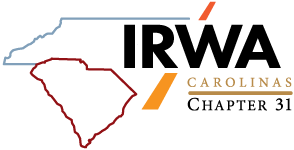The Future Of Transportation Project Programming — More Accurate Cost-Estimating Tools
The COVID-19 pandemic has placed enormous budget pressures on state and local governments, threatening deep and potentially lasting cuts to infrastructure projects and other critical programs. Traditional cost-estimating techniques can be time consuming and labor intensive, adding to these costs. Furthermore, industry research suggests that project overruns can be as high as 45 percent. In order to improve how cost estimates are done, we must first look at how we are currently estimating project right of way. To do that, we need to see where we are and where we want to go.
The traditional cost-estimating approach uses models derived from data based largely on projects previously delivered. These estimates are then amended as a project progresses, and the actual project scope and associated costs become known. However, this modeling approach typically considers just one or two variables or characteristics, such as the estimated market value of land and any damages to structures on the property. This is because traditional cost-estimating techniques are largely carried out manually with analysts inspecting data “by eye” to identify these correlations. This leads to models that use only a few cost drivers to create estimates. Additionally, while some organizations have a lot of historical project data, many don’t have the tools, people or time to crunch the data to get the most accurate costs. On the other hand, some organizations don’t have enough historical data to generate accurate estimates in the first place.

There are several ways to produce more accurate cost estimates in each situation more quickly; these ways also require fewer resources to perform compared to traditional methods. If there is an abundance of data available, then a cost-model approach, using algorithms to detect relationships between many different characteristics or variables to be discovered, removes subjectivity and uses more of the available project scope detail. Organizations with a lot of good quality historical data therefore benefit most from using this approach.
What if the organization does not have enough historical data or does not have the resources to gather and analyze the data? In one state, the preliminary right of way cost estimates were done with a tool that was based on a simple centerline buffer and applied multipliers dependent on geographic location as well as the rural or urban nature of the properties. Because of the centerline and buffer approach, interchange estimations proved problematic to calculate and were appraised by a singular cost depending on interchange type, rather than the physical size of the design footprint. Compounding the issue, geographic and rural/urban multipliers were applied on an overall parcel value that included improvements, exaggerating costs when infrastructure is not taken. Because of the macro nature of the tool, along with the broad sense in which multipliers were applied to costs, the tool often provided inconsistent results.
As a result of these inconsistencies, AECOM developed a geospatially based impact calculation tool. This tool calculates impact costs based on actual proposed ROW limits rather than a simple centerline buffer. This is especially important in refining the accuracy of interchange impacts since they are based on proposed footprints rather than applying a one-cost-fits-all approach. The tool applies the same general criteria and multipliers used in the prior tool the client was using. Unlike previous tools, the improved value of properties is not applied toward property impacts unless the buildings on the property are actually taken. The Right of Way Cost Estimating Tool that we have developed notably refines the ROW estimation process, providing a more accurate estimation.
However, it has been observed that the largest remaining factor that affects right of way estimates is property damages. Damages to unique properties within a project study area often escalate impact costs. None of the tools previously used accounted for these damages. We have begun working with this client in defining damages and other costs on a parcel-type basis. This “working” list currently defines costs of takes associated with common business types. It is the intent to continually refine, expand and apply this list towards the accuracy of ROW estimates. As the ROW tool continues to be refined and historical data gathered, an automated application of these damages will be added to the tool.


Ms. Tronel is the regional manager of right of way services for AECOM. She has more than 35 years of diversified experience in operations, project and right of way management for the transportation industry. Ms. Tronel is the regional manager of right of way services for AECOM and is a member of IRWA Chapter 31.
